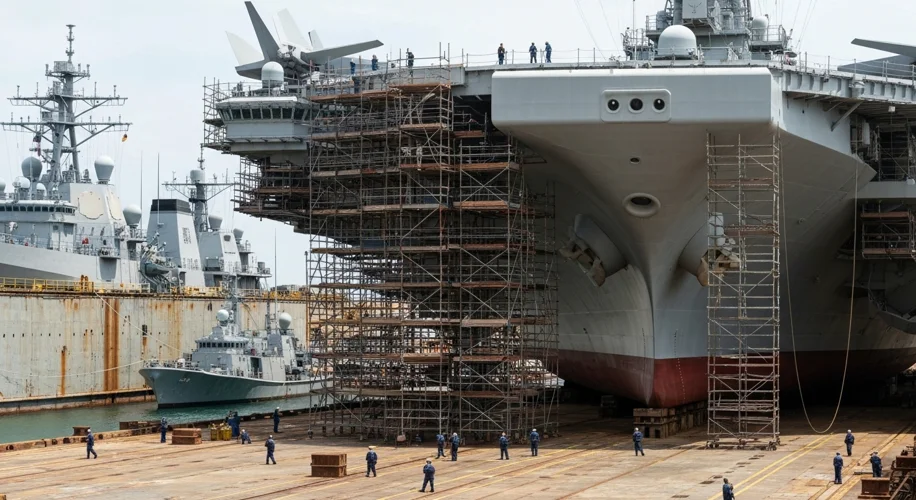Just think: The year is 1980. The United States, locked in a global Cold War, relies on its mighty Navy to project power and deter adversaries. Yet, beneath the gleaming hulls of its warships, a silent sickness was festering. A crisis of maintenance, so pervasive it threatened to cripple the fleet, was unfolding not on the battlefield, but in the sprawling repair yards and shipyards across the nation.
The U.S. Navy of the late 20th century was a marvel of engineering and a symbol of American strength. Its aircraft carriers, battleships, cruisers, and submarines patrolled the world’s oceans, a testament to decades of innovation and investment. However, the relentless pace of the Cold War, coupled with evolving naval strategies and the sheer complexity of maintaining such a vast and technologically advanced fleet, began to strain the system. The culture of readiness, while paramount, often prioritized deploying ships over ensuring their long-term structural integrity and operational readiness.
Key actors in this unfolding drama included not just the sailors aboard these vessels, but also the shipyard workers, naval engineers, and the defense policymakers in Washington D.C. For the sailors, the sight of their ships idly docked, awaiting repairs that seemed to stretch into eternity, was a source of frustration and a blow to morale. They were trained for the sea, for the challenge of naval warfare, not for the endless waiting games in port. Their perspective was one of lost training opportunities, delayed deployments, and the gnawing uncertainty about the condition of their metal homes.
The historical context is crucial. Following the Vietnam War, defense budgets faced scrutiny, and the Navy, while still powerful, had to contend with competing priorities. Furthermore, the introduction of increasingly sophisticated technology meant that ships became more complex, requiring specialized skills and parts that were not always readily available. The shift from a focus on quantity to a focus on quality in naval shipbuilding, while beneficial in the long run, created new logistical nightmares for maintenance.
The event itself wasn’t a single, dramatic explosion, but rather a slow, insidious decay. Ships were being worked harder and longer, with maintenance schedules often falling behind. This led to a snowball effect: minor issues, if not addressed promptly, would escalate into major repairs, necessitating longer dry-dock periods. The image of a once-proud destroyer or cruiser sitting idle, its systems deteriorating, its crew perhaps reassigned or left in limbo, became increasingly common. The bureaucratic layers involved in approving and executing repairs often added to the delays, creating a frustrating cycle of requests, rejections, and reassessments.

The consequences were far-reaching. The Navy’s ability to respond to global crises was hampered by the reduced number of operational vessels. The cost of repairs escalated as deferred maintenance became more expensive to rectify. More critically, the readiness of the fleet was compromised. The sailors aboard these ships, and indeed the entire naval command, lived with the constant anxiety that their ships might not be ready when called upon. This was not just an operational problem; it was a strategic vulnerability in an era defined by superpower competition.
Analysis and interpretation of this crisis reveal systemic issues within the Navy’s logistical and budgeting processes. The challenge lay in balancing the immediate need to project power with the long-term necessity of proper upkeep. It highlighted the difficulties inherent in managing a global, technologically advanced fleet, where the demands are constant and unforgiving. The crisis served as a stark reminder that naval power is not just about building ships, but about maintaining them – a lesson learned at significant cost and with immense effort.
The late 20th century maintenance crisis was a period of reckoning for the U.S. Navy. It underscored the vital, often unseen, work of the thousands of individuals tasked with keeping the fleet afloat and operational. The echoes of this period continue to inform naval strategy and logistics today, a crucial reminder that even the most powerful instruments of war require constant, diligent care to remain effective.

